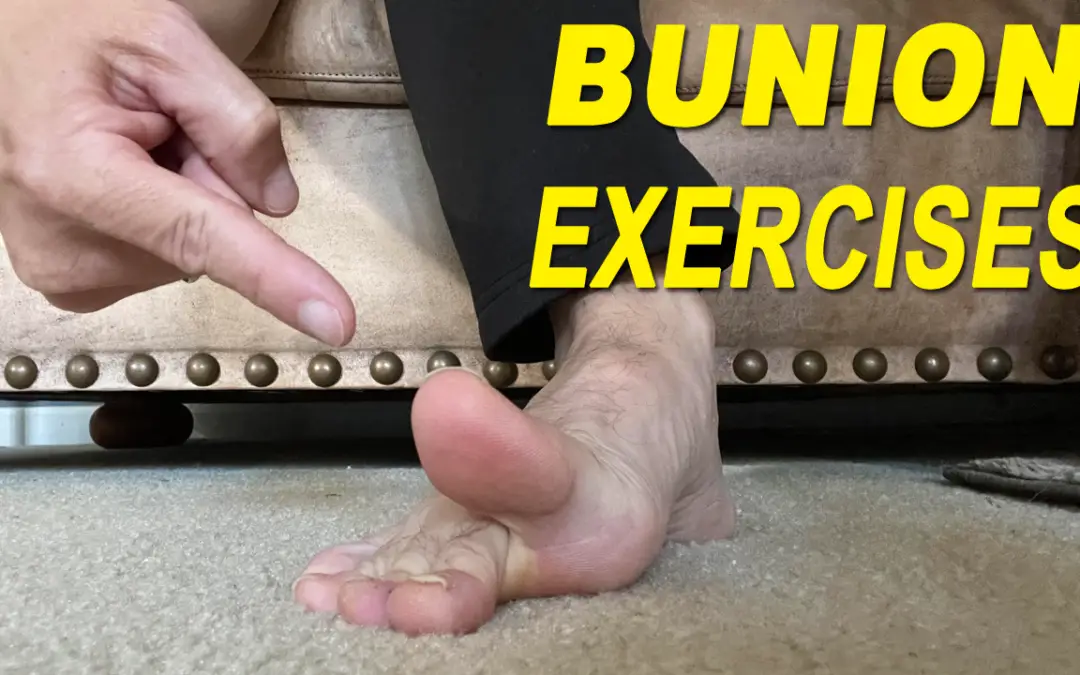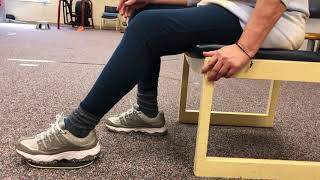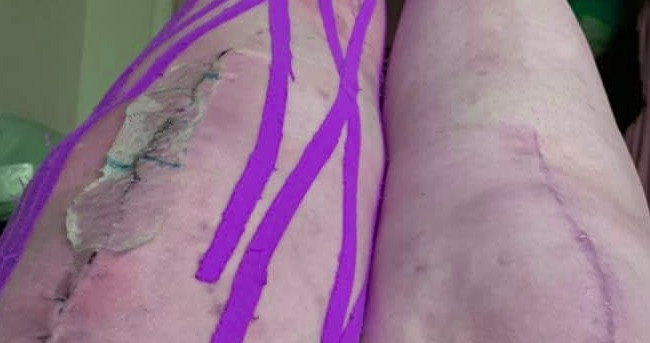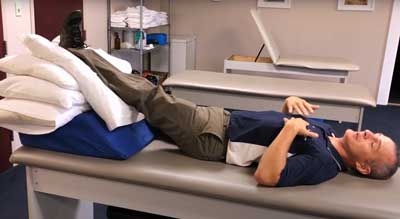Sleeping After Knee Replacement – 3 Best Positions
Finding a comfortable sleeping position after a knee replacement can be challenging. The most common advice is to sleep flat on your back with your surgical knee straight and elevated above your heart.
To achieve this, many surgeons recommend propping a pillow under your heel or using a straight wedge pillow under the surgical leg. But what about those of you who can’t sleep on your back due to other medical conditions?
What should you do?
1. Sleeping on your back
Why is sleeping on your back the most common recommendation?
Pros:
🟢 Sleeping on your back allows you to position your surgical knee in full extension.
🟢 It also enables you to elevate the surgical leg above the level of your heart to reduce swelling.
Cons:
🔴 Many individuals who have undergone a total knee replacement also suffer from low back pain associated with spinal stenosis and are unable to sleep flat on their back.
🔴 Neck pain is a common complaint for those who aren’t used to sleeping flat on their back.
Recommendations:
If your knee range of motion is improving along expected guidelines and you’re not experiencing significant swelling, consider sleeping in any position that is most comfortable for you.
2. Is it safe to sleep on my side after knee replacement?
Yes, side sleeping positions are safe and sometimes recommended after knee replacement surgery. If your knee range of motion is within the expected normal degrees based on the time since surgery, then you are encouraged to sleep in any position that provides you the best restorative sleep.
Two side sleeping positions:
- With your surgical knee down on the mattress. In this position, the bed contours to your leg. Try to keep your knee straight while sleeping on this side.
- With your surgical knee on top. In this position, you may use pillows to support the surgical leg and keep your knee above the level of your hip. This position makes it harder to keep the knee fully extended, but if your knee range of motion is within normal limits, your goal is simply to sleep well.
3. Is it safe to sleep on my stomach after knee replacement?
Yes, sleeping on your stomach, also known as prone, is both safe and an effective way to improve knee extension. The primary difference between sleeping on your stomach versus sleeping on your back with your leg propped is that the prone position will not reduce swelling. If you’ve always slept on your stomach or partially turned toward your stomach, you should be fine to return to that sleeping position.
Some patients may be concerned about the incision. If you experience significant sensitivity over the incision, there are strategies to reduce this sensitivity, but any danger in allowing the knee to rest incision down on the mattress.
Where do you put a pillow after knee surgery?
When sleeping in the supine (on your back) position, place one to three pillows under your surgical leg while attempting to keep your knee straight.
In the video below, you can see how to arrange pillows under the surgical leg to reduce swelling and position the knee comfortably:
You may also choose to use a wedge pillow if it is easier. You can find a great selection of wedge pillows on Amazon by clicking this link.
Frequently Asked Questions
-
How long should I keep my leg elevated after knee replacement surgery?
It is generally recommended to elevate your surgical leg above the level of your heart for the first few days after surgery, especially when you’re resting or sleeping. Gradually decrease the elevation as your swelling and pain decrease. It’s important to follow your surgeon’s and physical therapist’s recommendations for your specific case.
-
When can I start sleeping without a pillow under my surgical leg?
As your knee range of motion improves and the swelling decreases, you may start to feel more comfortable sleeping without a pillow under your leg. It’s essential to listen to your body and follow the guidance of your surgeon and physical therapist, who can provide personalized advice based on your recovery progress.
-
Can I use a recliner for sleeping after knee replacement surgery?
Using a recliner for sleeping after knee replacement surgery can be a good option for some individuals, as it allows for easy elevation and support of the surgical leg. However, it’s important to ensure that your knee is still in a comfortable, extended position while using a recliner. Consult with your surgeon or physical therapist for recommendations tailored to your specific situation.
About the Author -
Anthony Maritato, PT has been a licensed physical therapist since 2006. He specializes in post surgical care and rehabilitation of total knee replacement and rotator cuff repair surgery.
Mr. Maritato is also nationally recognized as a therapist educator teaching courses related to Medicare reimbursement, contracting, and documentation.
Total Therapy Solutions LLC is Tony's primary practice which he owns with his wife Kathy who is also a licensed physical therapist.
More Blog Posts …

When can I walk upstairs normally after TKR?
Article Updated: 09/02/2023Walking Upstairs Post-Op Throughout my extensive career as a physical therapist specializing in total knee replacements, I've observed a consistent pattern: the 10-week post-operative mark often serves as a significant milestone for...

Do Toe Spacers Help Bunions
Yes, toe spacers help bunions by mechanically realigning the great toe with the natural structure of the medial foot and arch. Toe spacers should initially be used for short periods of time, up to 20-minutes a day during the first week before increasing to several...

Heel Slides After Knee Surgery
"I would like to know when we can officially give up the darn heel slides and other stretch exercises, or do we need to continue forever?" Heel slides after knee surgery are just one of many exercises available to increase range of motion, reduce swelling, and regain...

Does RockTape Kinesiology Tape Help Recovery After Total Knee Replacement
Yes, kinesiology tape has been studied and may be effective for patients following total knee replacement surgery. Here is a quote from a recent study concluding: "KT technique appeared to be beneficial for reducing postoperative pain, edema, improving knee extension...

5 Best Wedge Pillows for Total Knee Replacement
What is a wedge pillow? A wedge pillow is literally what it sounds like, a pillow shaped like a wedge. Wedge pillows are commonly used for people who have sleep apnea or breathing issues at night. They are also used for any condition in which a person needs to keep...

Best walking shoes after knee replacement surgery in 2022
Best Shoes After Knee Replacement: What should I wear immediately after knee replacement surgery? What are the best shoes to wear at home? At Physical Therapy?

Scheduling A Massage After Knee Replacement Surgery
Massage therapy is an effective treatment in post-surgical care to reduce pain, improve swelling, and help return patients to daily activities. Several studies have investigated the benefits of massage therapy as soon as 2 days after total knee replacement surgery....

When Can I Drive After Total Knee Replacement Surgery?
You may typically resume driving 6 weeks after total knee replacement surgery. In the US, some surgeons will allow people who had their left knee replacement resume driving sooner. The most important factor to getting clearance to drive is your ability to walk...

Shin Pain After Knee Replacement
Shin pain after a knee replacement is often due to bone strain. The knee is experiencing new loading patterns and will take up to 12-months to remodel.

What causes sciatica after knee replacement?
Occasionally after a total knee replacement, my patients reports signs and symptoms consistent with sciatica. My patients describe a sharp, burning hot poker stabbing them in the buttock with searing pain that runs down the lateral back of the leg to the knee and...
